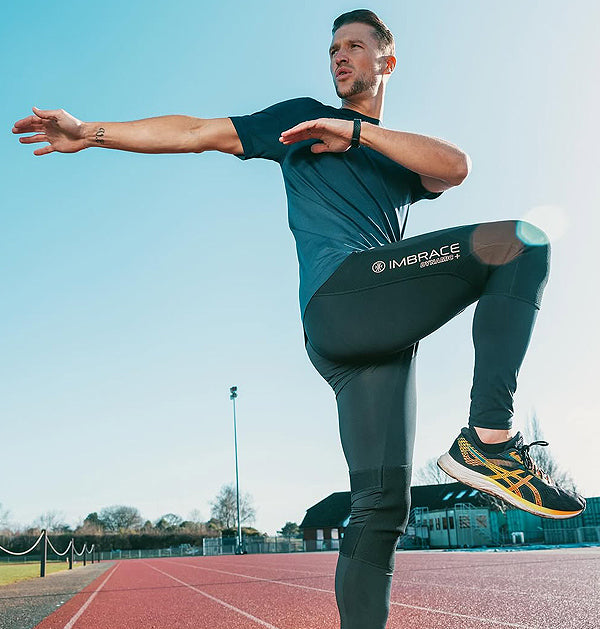Article: Imbrace - supporting you to go the distance.
Imbrace - supporting you to go the distance.
Are you running a marathon this year?
Despite the slushy start to 2024. If you're out there putting in the miles, you’ll be aware of the investment and dedication it takes to build up to the big day. Dedication, perseverance, self-motivation and continuous planning, it’s all consuming.
It's essential to stay injury-free throughout your journey to ensure you reach the starting line feeling strong and confident.
Here are some key tips to help you reduce your chance of injury while training for a marathon:
1. Build the Mileage Gradually
One of the most common causes of marathon training injuries is increasing mileage too quickly. Your lower body and feet take a pounding and you need to accustom them to the demands you are placing on them. Consider wearing compressive leggings which will offer support to your knees and hips as your mileage increases. Gradually build up your mileage each week. Follow the 10% rule – never increase your weekly mileage by more than 10% from the previous week. This allows your body to adapt to the demands of running and reduces the risk of overuse injuries.
2. Incorporate Cross-Training
It’s not all about just pounding out the miles. Cross-training is an excellent way to build strength, improve cardiovascular fitness, and reduce the risk of overuse injuries. Incorporate activities such as cycling, swimming, yoga, or strength training into your routine to give your running muscles a break and prevent imbalances.
3. Listen to Your Body
Pay attention to any signs of pain or discomfort during your runs. Pushing through and ignoring pain can lead to serious injury. It's essential to listen to your body and address any issues promptly. If you experience persistent pain, consider taking a rest day or consulting with a healthcare professional.
4. Warm-Up and Cool Down
Before starting your run, warm up with dynamic stretches and movements to prepare your muscles and joints for the activity ahead. After your run, cool down with static stretches to improve flexibility and prevent muscle tightness. Incorporating foam rolling or self-massage techniques can also help alleviate muscle tension. Wear recovery leggings like Imbrace Dynamic to reduce inflammation and muscle soreness.
5. Wear the Right Gear
Your running shoe may be the key to your success. Invest in high-quality shoes that provide adequate support and cushioning for your foot type and running gait. Replace your shoes every 300-500 miles to ensure they continue to provide optimal support and shock absorption. You wouldn’t drive on old or worn-out tyres - it’s the same with running shoes. After a certain mileage they are finished even if they look fine.Visit you local running shop and talk to the staff. They are running enthusiasts themselves and will be able to assess your running style and put you in the shoe that’s right for you. Wear moisture-wicking clothing to stay dry and comfortable during your runs. Consider wearing knee support leggings like Imbrace Dynamic+ to keep muscles and joints warm, reduce muscle bounce and general fatigue.
6. Fuel and Hydrate Properly
Proper nutrition and hydration are essential for optimal performance and quick recovery. Fuel your body with a balanced diet rich in carbohydrates, protein, healthy fats, and micronutrients. Stay hydrated throughout the day and during your runs. Experiment with different hydration and fuelling strategies during your long runs to find what works best for you.
7. Incorporate Rest and Recovery
Rest and recovery are just as important as training itself. Schedule regular rest days into your training plan to allow your body to recover and repair. Listen to your body its cues and prioritise sleep, nutrition, and stress management to support your overall health and well-being. By following these tips and listening to your body, you’ll minimise the risk of injuries and enjoy a safe and successful marathon training experience. Remember that consistency, patience, and self-care are key to achieving your goal of getting to the start injury free.
When you stand at the start line with everyone else - enjoy the atmosphere and when you hit those low points remember ‘your why’
Good luck!



